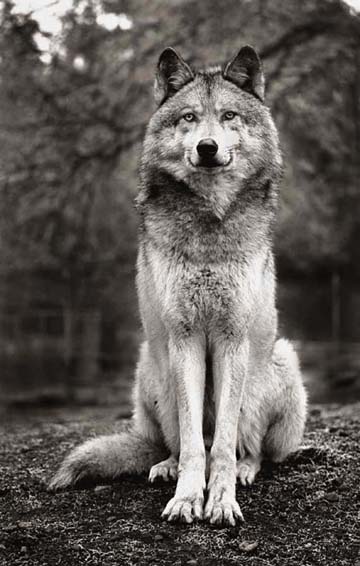
History of the wolf in North America
Historically, most societies had a positive attitude towards the wolf. Indigenous peoples of North America regarded the wolf as a creature of great power, and as a positive source of inspiration (Lopez, 1978 cited in Keller, 1995). The wolf was a symbol of courage and wisdom and placed at the top of many totem poles as "the ruler of the land." The Eskimos viewed the wolf as intelligent and social, and as an animal that acts with insight and deliberation. Similarly the Indians of the West Coast and Canada viewed the wolf as a religious and mythical figure (Zimen, 1981).
This attitude changed and the wolf began to be seen as an enemy with the extensive keeping of domestic animals (Kellert, 1995). Wolves were viewed as destroyers of livestock. Therefore many people saw them as an inconvenience and a likely source of economic setbacks, and thus they no longer had a place in our advancing civilization. The negative attitudes and actions taken towards wolf populations in the Unites States may harbor a deeper sentiment of fear towards this powerful carnivore, and the resulting desire to control a species seen as so wild and vicious (Zimen, 1981). In our culture, the wolf embodies fear and terror on one hand, fascination and admiration on the other (Zimen, 1981).
"Destroying the wolf may have reflected an urge to rid the world of an unwanted and feared element of nature. Wolf hatred may also have reflected a deficient understanding of human dependence on nature for ecological, emotional, and intellectual sustenance" (Kellert, 1995)

Ultimately, it is our attitude towards the wolf that determines its future. The issues surrounding the return of the wolf intertwine ethics, economics, history, and biology. This paper aims to focus on biological issues associated with the wolf, and the environmental implications of its return to the wilderness of the United States.
next to Driven towards extinction
return to History & Key Issues
return home